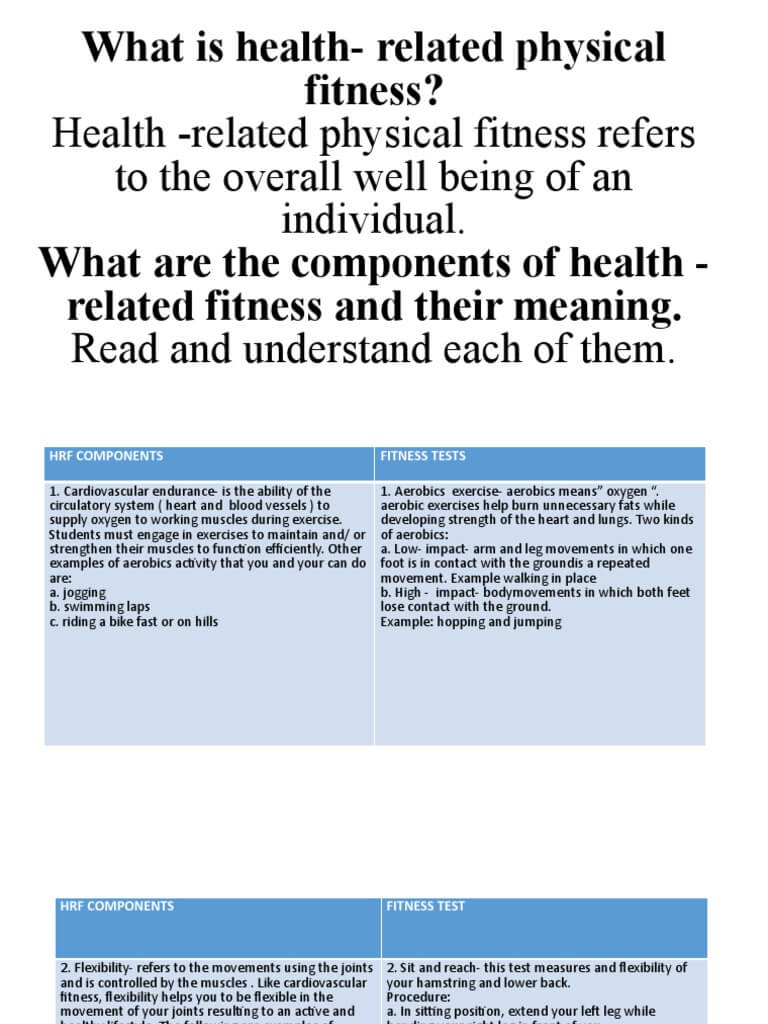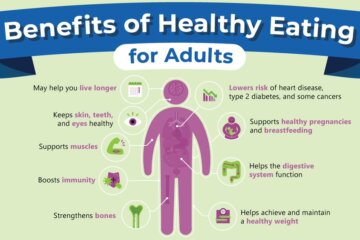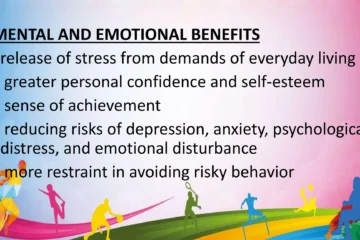“What is the Meaning of Health Related Physical Fitness”
Have you ever wondered what health-related physical fitness really means for you? You might hear the term often, but understanding its true essence can be a game changer for your well-being.
Health-related physical fitness isn’t just about having a toned body or being able to run a marathon. It’s about how well your body performs in daily life and how it handles everything from stress to simple tasks like walking up the stairs.
Imagine feeling more energetic, having better control over your weight, and reducing your risk of chronic diseases—all through understanding and enhancing your fitness. Are you curious about how this can impact your life? Let’s dive into what health-related physical fitness means and why it’s crucial for your overall health. You’ll discover insights that could transform your approach to fitness and improve your quality of life in ways you never thought possible.

Credit: slideplayer.com
Defining Health-related Physical Fitness
Health-related physical fitness means having a strong heart, muscles, and good flexibility. It helps you perform daily activities easily and reduces health risks. A healthy lifestyle includes balanced exercise for overall well-being.
Defining health-related physical fitness is crucial for understanding how to maintain and improve your overall well-being. It’s not just about being able to run a marathon or lift heavy weights. Health-related physical fitness encompasses various aspects that contribute to a healthy lifestyle. Let’s dive into what it really means and why it’s important for you.
What Is Health-related Physical Fitness?
Health-related physical fitness includes several components that focus on enhancing your health rather than just improving your athletic performance. It involves activities and exercises that support your heart, muscles, and flexibility, aiding in your ability to perform everyday tasks with ease. When you prioritize health-related physical fitness, you’re actively working on improving your cardiovascular endurance, muscle strength, flexibility, and body composition. Each element plays a unique role in ensuring your body functions optimally.
Components Of Health-related Physical Fitness
Understanding the components of health-related physical fitness helps you tailor your fitness routine to meet your personal health goals. Here are the main components: – Cardiovascular Endurance: This is your heart and lung’s ability to supply oxygen during physical activity. Regular activities like brisk walking or cycling can enhance your endurance, making daily activities less tiring. – Muscle Strength: This refers to the ability of your muscles to exert force.
Strength training exercises, such as lifting weights or resistance bands, help in building strong muscles, which can protect your joints and prevent injuries. – Flexibility: Flexibility is the range of motion in your joints. Stretching exercises or yoga can improve flexibility, reducing the risk of muscle strains and enhancing your movement efficiency. – Body Composition: This involves the proportion of fat to lean mass in your body. Maintaining a healthy body composition helps reduce the risk of chronic diseases and improves your overall health.
Why Focus On Health-related Physical Fitness?
Imagine waking up every morning feeling energetic and ready to tackle the day. Health-related physical fitness can make that possible. By focusing on these components, you’re not only increasing your physical capabilities but also boosting your mental health. Have you ever noticed how a good workout session uplifts your mood? That’s because physical activity releases endorphins, the feel-good hormones. Investing time in your fitness routine can lead to a happier, healthier you.
Actionable Steps To Improve Your Health-related Physical Fitness
Start with small, manageable changes in your routine. Incorporate cardiovascular activities like walking or cycling into your daily schedule. Add strength training exercises twice a week to build muscle strength. Don’t forget to include flexibility exercises. Stretching or yoga sessions can be a great way to unwind while improving your range of motion. Think about your body composition. Monitor your dietary habits and aim for a balanced diet that supports your fitness goals. What small change can you make today to improve your health-related physical fitness? Remember, every little step counts towards a healthier lifestyle.
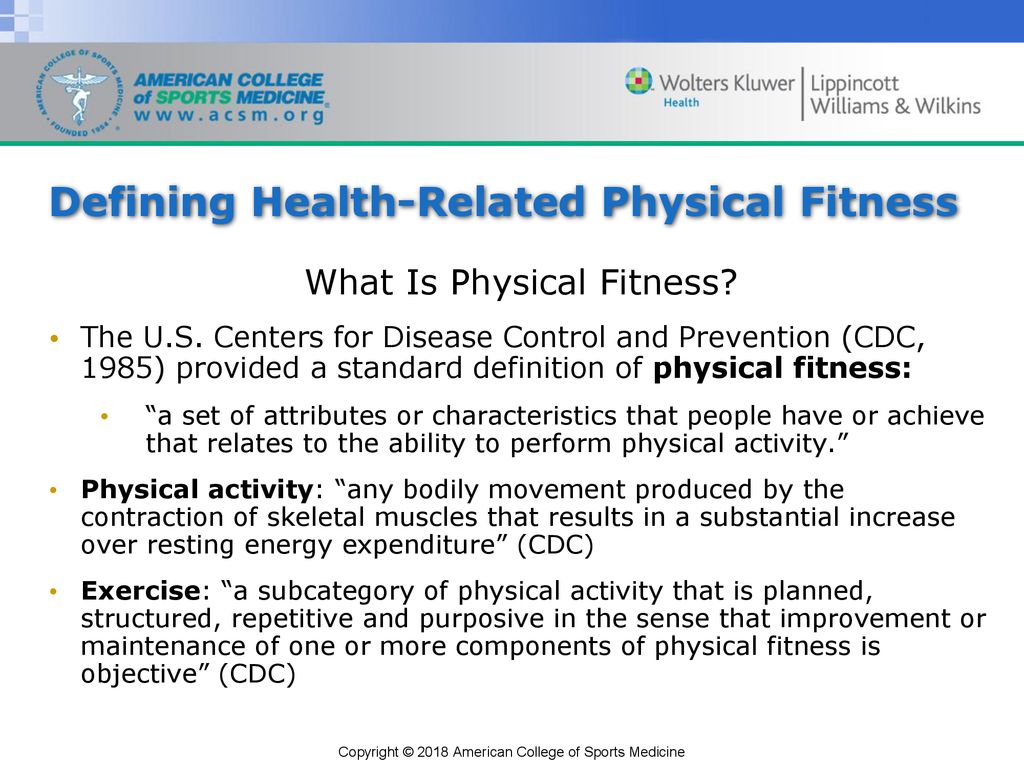
Credit: slideplayer.com
Components Of Physical Fitness
Health-related physical fitness includes components like cardiovascular endurance, muscular strength, flexibility, and body composition. These elements are crucial for overall well-being. Improving these areas can enhance daily activities and reduce health risks.
Understanding the components of physical fitness can transform how you approach your health goals. Each component plays a unique role in overall well-being. By focusing on these elements, you can build a balanced fitness routine that enhances your quality of life.
Cardiorespiratory Endurance
Cardiorespiratory endurance is your body’s ability to keep up with exercises like running, swimming, or cycling. It’s about how well your heart and lungs can supply oxygen to your muscles during prolonged activity. Improving this component can lead to increased stamina and energy in daily life. Think about how you feel after climbing a flight of stairs. If you’re out of breath, it might be time to boost your endurance. Start with a brisk walk or a short bike ride and gradually increase the intensity.
Muscular Strength And Endurance
Muscular strength is the power your muscles exert, while endurance is their ability to sustain repeated contractions. These elements are crucial for everyday tasks, from lifting groceries to playing with your kids. Consider how often you need to move furniture or carry heavy bags. Developing strength through weight training or bodyweight exercises can make these tasks easier. To build endurance, focus on activities that require repetitive movement, like rowing or circuit training.
Flexibility
Flexibility allows your joints to move through their full range of motion. This component is essential for preventing injuries and maintaining mobility. It’s not just for gymnasts or dancers; everyone benefits from being more flexible. Think about when you last tried to touch your toes. If it’s been a while, try incorporating daily stretches into your routine. Yoga or Pilates classes can also be a fun way to enhance flexibility.
Body Composition
Body composition refers to the ratio of fat to lean mass in your body. It’s a better indicator of fitness than weight alone because muscle weighs more than fat but takes up less space. A healthy body composition improves your overall health and reduces the risk of chronic diseases. Have you ever wondered why two people of the same weight can look different? This difference often comes down to body composition. To improve it, combine strength training with cardiovascular exercises and maintain a balanced diet. Which component do you think you need to focus on the most? Identifying your weak spots can help you tailor your fitness routine to meet your specific needs. By addressing each component, you create a holistic approach to health-related physical fitness.
Importance Of Physical Fitness
Physical fitness holds great importance in our lives. It boosts overall health and well-being. Engaging in regular physical activity helps maintain a healthy weight. It improves muscle strength and increases endurance. Staying fit enhances energy levels throughout the day. This makes daily tasks easier and more enjoyable.
Physical fitness is not just about the body. It also has a profound impact on the mind. Keeping active can help manage stress and improve mood. Let us explore these benefits further.
Benefits For Mental Health
Exercise releases endorphins, which are natural mood lifters. It can reduce feelings of depression and anxiety. Regular activity promotes better sleep, improving mental clarity. Exercise can help improve self-esteem and confidence. It provides a sense of accomplishment. Engaging in physical activities with others can foster social connections. This further supports mental well-being.
Chronic Disease Prevention
Physical fitness plays a crucial role in disease prevention. It helps regulate blood pressure and blood sugar levels. This reduces the risk of heart disease and diabetes. Regular exercise strengthens the heart and lungs. It also supports bone health, reducing the risk of osteoporosis. Staying active can aid in maintaining a healthy cholesterol level. This further lowers the risk of chronic diseases.
Enhancing Daily Functionality
Being physically fit enhances daily functionality. It increases flexibility, making movements easier and safer. Improved balance reduces the risk of falls, especially in older adults. Physical fitness boosts stamina, allowing you to perform daily tasks efficiently. It also helps in maintaining a healthy weight, easing joint stress. Regular physical activity supports a better quality of life. It enhances independence and overall well-being.
Measuring Physical Fitness
Understanding how to measure physical fitness can transform your approach to health. It’s not just about hitting the gym. It’s about knowing where you stand and how far you’ve come. By measuring your physical fitness, you can set realistic goals and track your progress effectively.
Fitness Assessments
Fitness assessments are your starting line. They offer a snapshot of your current fitness level. You might use tests like the beep test to gauge your cardiovascular endurance or a simple sit-and-reach for flexibility. These assessments help you identify strengths and areas for improvement. Consider trying different types to paint a full picture of your fitness.
Think back to the last time you tested yourself physically. Did you surprise yourself with your endurance or struggle with flexibility? Use these assessments to understand your body better. They help you set achievable goals based on real data, not assumptions.
Tracking Progress
Tracking progress keeps you motivated. It’s rewarding to see numbers change on a scale or stopwatch. You can use apps or journals to record your workouts, weight, and measurements. This creates a visual journey of your fitness evolution.
Ask yourself: What changes have you noticed in your energy levels or strength? Tracking helps you connect the dots between effort and results. Celebrate small victories like lifting heavier weights or running longer distances. These milestones show you’re moving in the right direction.
Imagine looking back at a year’s worth of tracked data. The patterns tell a story of perseverance and growth. Tracking doesn’t just measure progress; it fuels your motivation to keep pushing forward.
Measuring physical fitness is more than a routine check. It’s a powerful tool to understand and improve your health. So, are you ready to start your fitness journey?
Improving Physical Fitness
Exploring the essence of health-related physical fitness reveals its role in promoting overall well-being. It combines strength, endurance, flexibility, and body composition, helping individuals maintain a healthy lifestyle. This concept encourages regular exercise and balanced nutrition for a healthier, more active life.
Improving physical fitness is a journey that can transform not only your body but also your mindset. It’s about feeling stronger, having more energy, and living a more active and fulfilling life. But how do you actually improve your physical fitness? Let’s explore some practical steps to get you moving in the right direction.
Exercise And Training
Exercise is the cornerstone of improving physical fitness. It isn’t just about hitting the gym; it’s about finding activities you enjoy. Whether it’s a brisk walk in the park, a dance class, or a cycling session, the key is consistency. Aim for at least 150 minutes of moderate aerobic activity each week. Strength training is equally important. It helps build muscle, boosts metabolism, and enhances endurance. Incorporate exercises like push-ups, squats, and lunges into your routine. Remember, it’s not about how much you can lift but about improving gradually.
Healthy Lifestyle Choices
Your fitness journey isn’t just about the time you spend exercising. It’s also about the choices you make every day. Eating a balanced diet rich in fruits, vegetables, lean proteins, and whole grains fuels your body for physical activity. Drinking enough water keeps you hydrated and aids in recovery. Sleep is another vital component. Restful sleep allows your muscles to repair and grow. Aim for seven to nine hours of quality sleep each night. Stress management also plays a role. Techniques like meditation or yoga can help keep your mind and body in harmony. Improving physical fitness is a holistic approach. What small change can you start with today? Maybe it’s taking the stairs instead of the elevator. Or swapping a sugary snack for a piece of fruit. Every small step counts, and each one brings you closer to a healthier, fitter you.
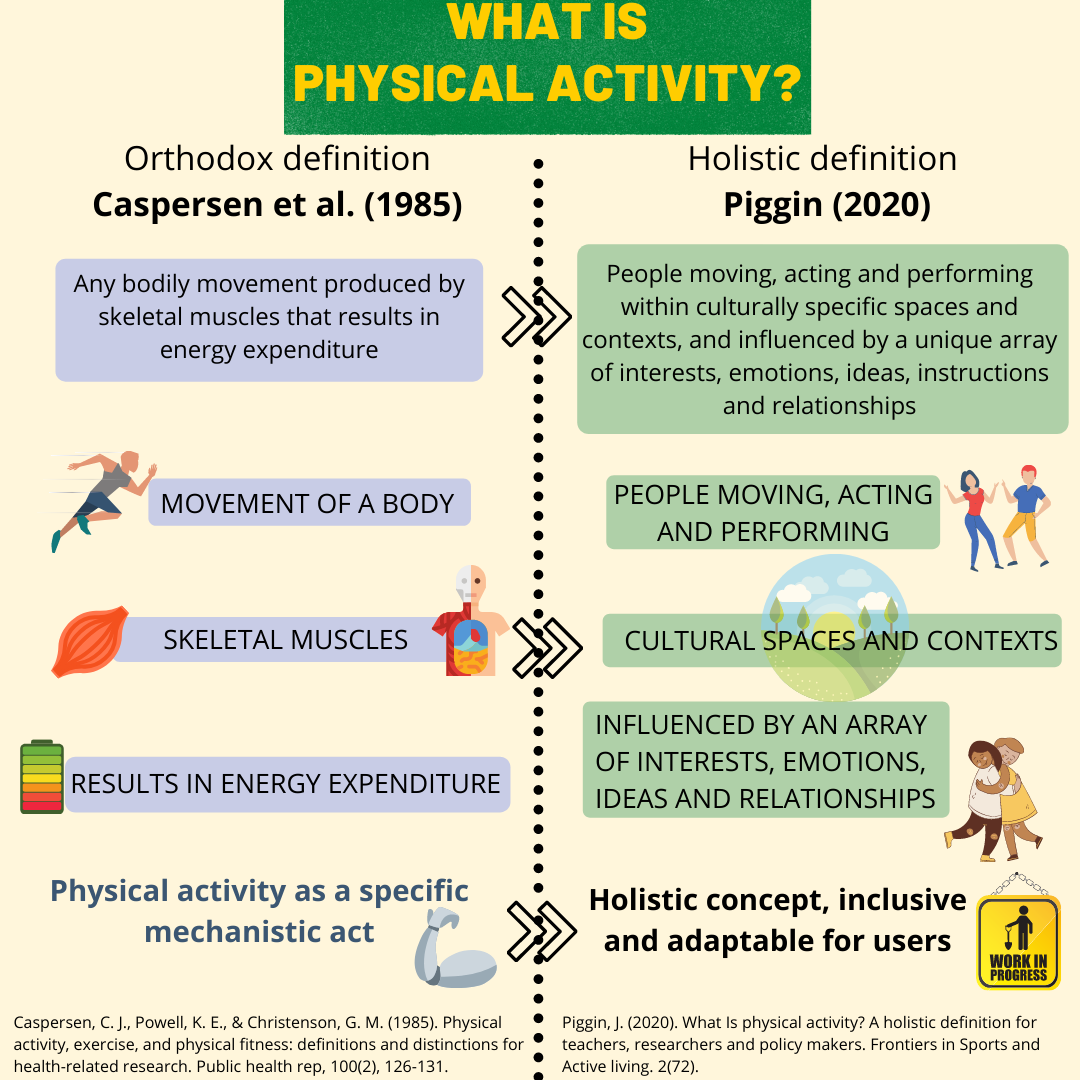
Credit: blogs.bmj.com
Common Misconceptions
Understanding health-related physical fitness often involves misconceptions. It doesn’t just mean being fit or looking athletic. It includes strength, endurance, flexibility, and body composition, essential for overall well-being.
Understanding the meaning of health-related physical fitness is essential for anyone looking to improve their well-being. However, misconceptions can cloud our judgment and lead us astray. Let’s dive into some of these common misunderstandings and clear the air.
Fitness Vs. Health
Many people equate fitness with health, assuming they are interchangeable terms. Fitness refers to your body’s ability to perform physical tasks. Health encompasses a broader spectrum, including mental, emotional, and social well-being. You can be fit but not necessarily healthy. Imagine a marathon runner who struggles with stress. Despite their physical prowess, they may face challenges in other areas of health. Reflect on your own life. Are you focusing on one aspect while neglecting others? Strive for balance to truly achieve health-related physical fitness.
Spot Reduction Myth
Have you ever heard that you can lose fat from a specific body part by targeting it with exercises? This is known as the spot reduction myth. Unfortunately, our bodies don’t work that way. Fat loss happens across your entire body, not just in one area. Doing endless sit-ups won’t give you a flat stomach if you’re not managing your overall body fat.
Think about your workout routine. Are you spending too much time on one area in the hope of quick results? Instead, aim for a balanced routine that includes both cardio and strength training. Question your beliefs about fitness and health. Are they based on facts or myths? By understanding these misconceptions, you can create a more effective and balanced approach to your well-being.
Role Of Nutrition In Fitness
Nutrition plays a vital role in fitness by fueling the body and aiding recovery. Health-related physical fitness encompasses strength, flexibility, endurance, and body composition. Balanced nutrition ensures optimal performance and supports overall well-being.
Understanding the role of nutrition in fitness can truly transform your health journey. What you eat fuels your workouts, supports recovery, and impacts your overall performance. It’s not just about counting calories; it’s about making smart choices that benefit your physical fitness.
Balanced Diet
A balanced diet is crucial for maintaining your health and enhancing your physical fitness. It includes a variety of foods that provide essential nutrients like proteins, carbohydrates, and healthy fats. These nutrients help you build muscles, repair tissues, and provide energy for your workouts. Consider this: when I started eating more fruits and vegetables, I noticed a significant boost in my energy levels. This small change can make a big difference in your fitness goals.
Hydration
Staying hydrated is often overlooked, but it’s vital for optimal physical performance. Water regulates your body temperature, keeps your joints lubricated, and helps transport nutrients. Dehydration can lead to fatigue, cramps, and even dizziness during exercise. Have you ever felt sluggish during a workout? It might have been due to lack of water. Make it a habit to sip water throughout the day, and more so before, during, and after your workouts.
Nutrition is a powerful ally in your fitness journey. Are you making the right choices to fuel your body?
Physical Fitness Across Ages
Physical fitness is essential for people of all ages. It helps maintain a healthy lifestyle and improves overall well-being. Each age group has unique fitness needs. These needs cater to their growth, energy levels, and health conditions. Understanding these differences ensures that everyone can enjoy an active and healthy life.
Children And Adolescents
Children need at least an hour of physical activity daily. This helps build strong muscles and bones. Activities like running, jumping, and playing sports are ideal. They improve cardiovascular health and coordination. Engaging in team sports also teaches teamwork. It boosts confidence and social skills.
Adults
Adults should aim for at least 150 minutes of exercise weekly. This can include brisk walking, cycling, or swimming. Regular activity reduces the risk of chronic diseases. It improves mood and reduces stress. Strength training twice a week is beneficial. It helps maintain muscle mass and bone strength.
Seniors
Seniors benefit from regular physical activity. It helps maintain balance and flexibility. Gentle exercises like yoga and tai chi are great. They reduce the risk of falls and improve mobility. Walking and light strength training keep muscles strong. It also supports heart health and boosts energy levels.
Frequently Asked Questions
What Is Health Related Physical Fitness?
Health related physical fitness refers to components like cardiovascular endurance, muscular strength, flexibility, and body composition. These elements are vital for overall health. They help in improving daily functioning, reducing disease risk, and enhancing quality of life.
Why Is Physical Fitness Important For Health?
Physical fitness is crucial for maintaining a healthy lifestyle. It helps in reducing the risk of chronic diseases, improves mental health, and boosts energy levels. Regular exercise enhances mood and increases longevity, contributing to a healthier and more fulfilling life.
How Does Fitness Affect Mental Health?
Physical fitness positively impacts mental health by reducing stress, anxiety, and depression. Exercise releases endorphins that improve mood and enhance cognitive functions. Regular physical activity can lead to better sleep and increased self-esteem, contributing to overall mental well-being.
What Are The Types Of Physical Fitness?
There are two main types of physical fitness: health-related and skill-related. Health-related fitness includes cardiovascular endurance, muscular strength, flexibility, and body composition. Skill-related fitness focuses on agility, balance, coordination, speed, and power, enhancing athletic performance.
Conclusion
Health-related physical fitness is vital for a balanced life. It supports overall well-being and prevents diseases. Regular exercise boosts energy and improves mood. It strengthens muscles and bones, too. A healthy lifestyle leads to a happier life. Small steps can make a big difference.
Start with simple activities like walking or cycling. Consistency is key. Find activities you enjoy. Make fitness a part of your routine. Remember, every effort counts. Stay motivated and keep moving. Your body and mind will thank you. Embrace a healthier future today.

“As the voice behind Radiant Glow Health, we are dedicated to being your ultimate wellness and vitality companion. Our mission is to inspire and guide you on your journey to a healthier and more vibrant life. Join us as we explore holistic health practices and empower you to radiate wellness from within.”
